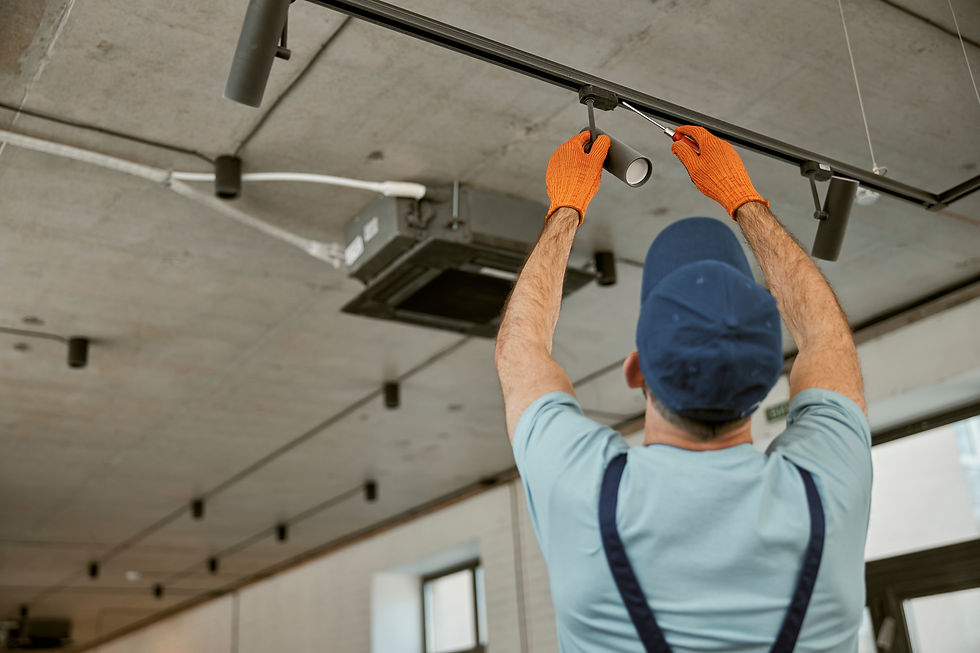The Silent Budget Killer: Hidden Costs of Reactive vs. Preventive Maintenance
- Ethan Jorssen
- Apr 30
- 2 min read
When it comes to maintaining commercial and residential properties, many property owners unknowingly fall into a dangerous cycle: waiting until something breaks before addressing it. While this reactive approach may seem cost-effective in the short term, it often leads to much higher expenses down the road. In contrast, a proactive, preventive maintenance strategy saves money, protects assets, and improves tenant satisfaction.
Understanding Reactive vs. Preventive Maintenance
Reactive Maintenance also known as “run-to-failure” maintenance, this approach involves fixing or replacing equipment and infrastructure only when it breaks. It seems cost-effective upfront—after all, why spend money on something that isn’t broken?
But here’s the catch: unplanned failures tend to occur at the worst times and can be far more expensive to resolve. Costs include emergency repair rates, expedited parts, property damage, and disruption to operations or tenant activities.
Preventive Maintenance: this approach involves regularly scheduled inspections, servicing, and repairs to keep systems running optimally and identify problems before they become major issues. Though it requires planning and some upfront investment, preventive maintenance dramatically reduces unexpected costs, extends equipment life, and lowers risk.
The Hidden Costs of Reactive Maintenance
Emergency Repair Rates & Labor Overtime: Emergency work often comes with premium costs for labor, rushed parts, and after-hours service calls.
Collateral Damage: When something fails, it rarely happens in isolation. A leaking pipe might damage ceilings and electrical systems. A broken HVAC unit can affect multiple tenants and create mold risks.
Downtime & Tenant Disruption: Equipment failures can halt business operations, causing productivity losses or even tenant dissatisfaction and turnover.
Liability Exposure: Neglected maintenance increases the risk of accidents and legal claims—think of someone slipping on an unmaintained walkway or a fire caused by faulty wiring.
Reduced Asset Value: Deferred maintenance lowers your property’s value, making it less attractive to investors and more costly to restore later
Benefits of a Preventive Maintenance Strategy
Longer equipment life
Lower annual maintenance costs
Fewer emergency repairs
Increased energy efficiency
Improved safety and compliance
Better tenant satisfaction and retention
Conclusion: Why Partner with Secured Property Group
At Secured Property Group, we understand that property owners and managers are under pressure to balance budgets while ensuring safety, functionality, and tenant satisfaction. Our preventive maintenance services are designed to protect your investment before issues arise—saving you time, money, and stress in the long run.
Whether it’s routine inspections, seasonal servicing, or 24/7 response support, our team ensures your building systems are always in peak condition. We help you avoid hidden costs, maintain compliance, and preserve the long-term value of your property.
💡 Don’t wait for a breakdown to take action—invest in proactive building care with Secured Property Group.






Really well explained. The breakdown of hidden costs—like downtime, liability, and reduced asset value—hits the nail on the head. Preventive maintenance isn’t just about saving money, it’s about protecting long-term property value. I also shared my take on why proactive upkeep is crucial here —it might add another angle to this discussion.
This is spot on — I’ve seen too many property owners fall into the ‘fix it when it breaks’ trap, only to face huge bills later. Preventive planning really does save both money and stress. I wrote a similar piece on building upkeep here, and it ties in well with your points.